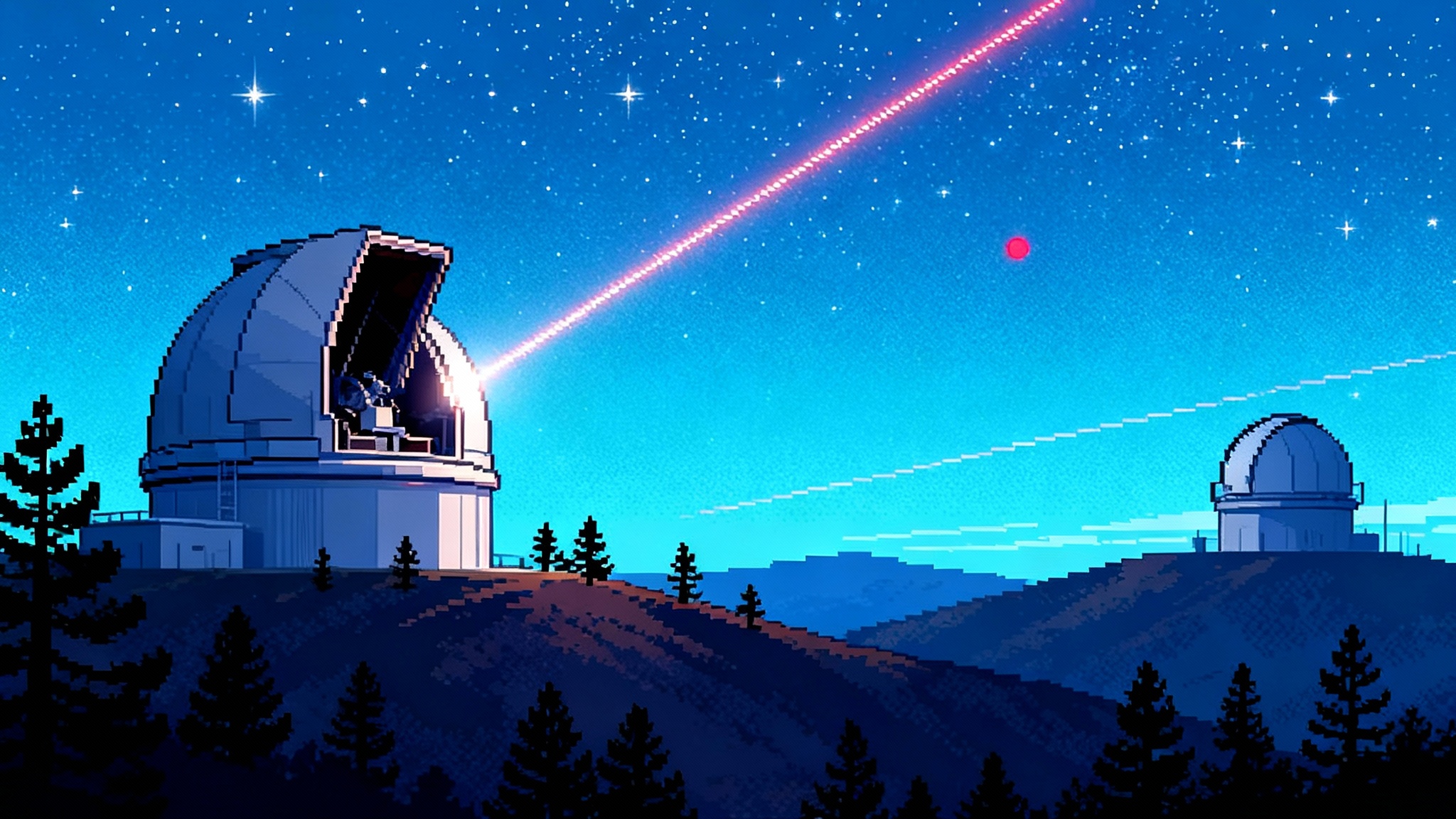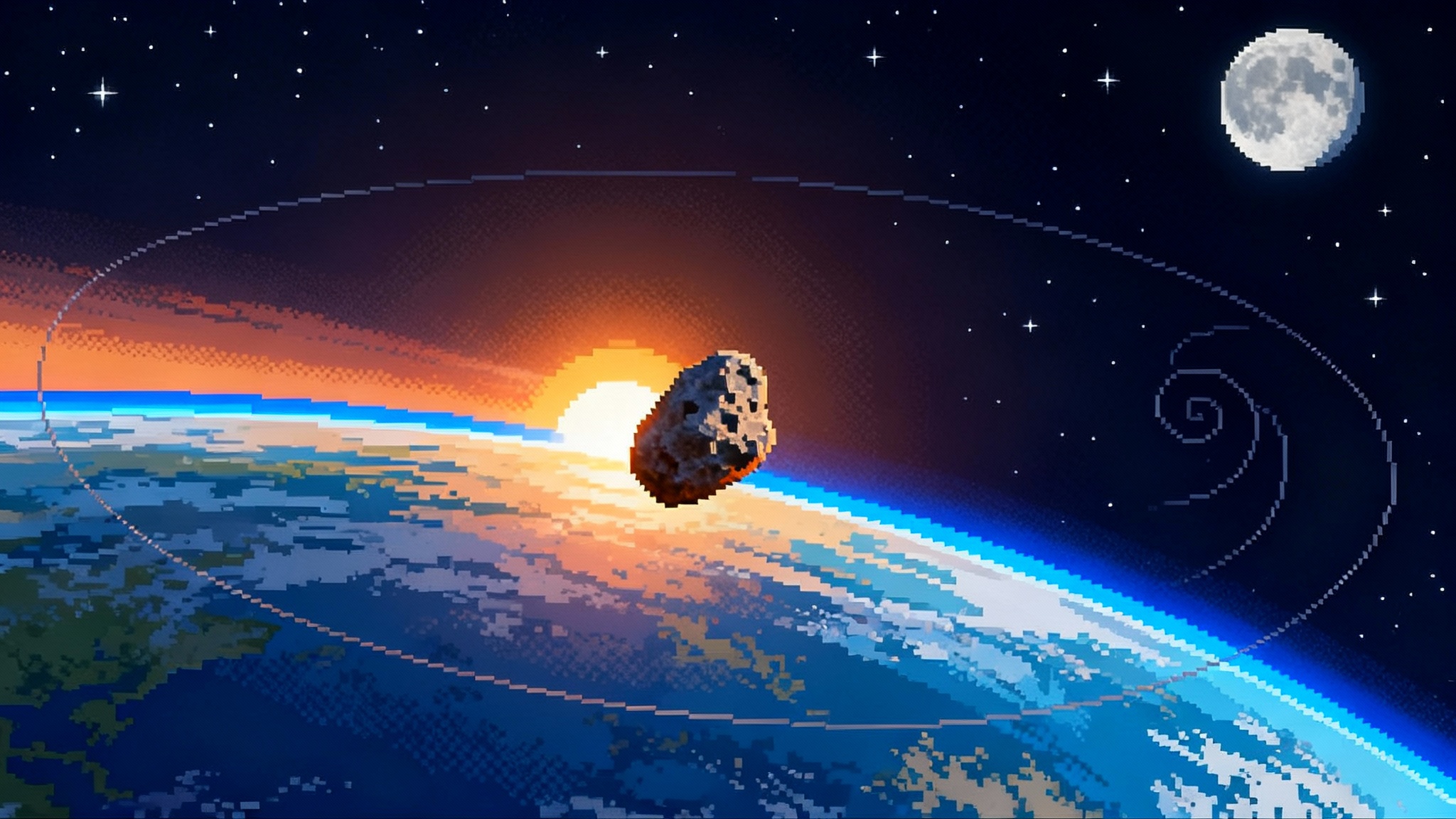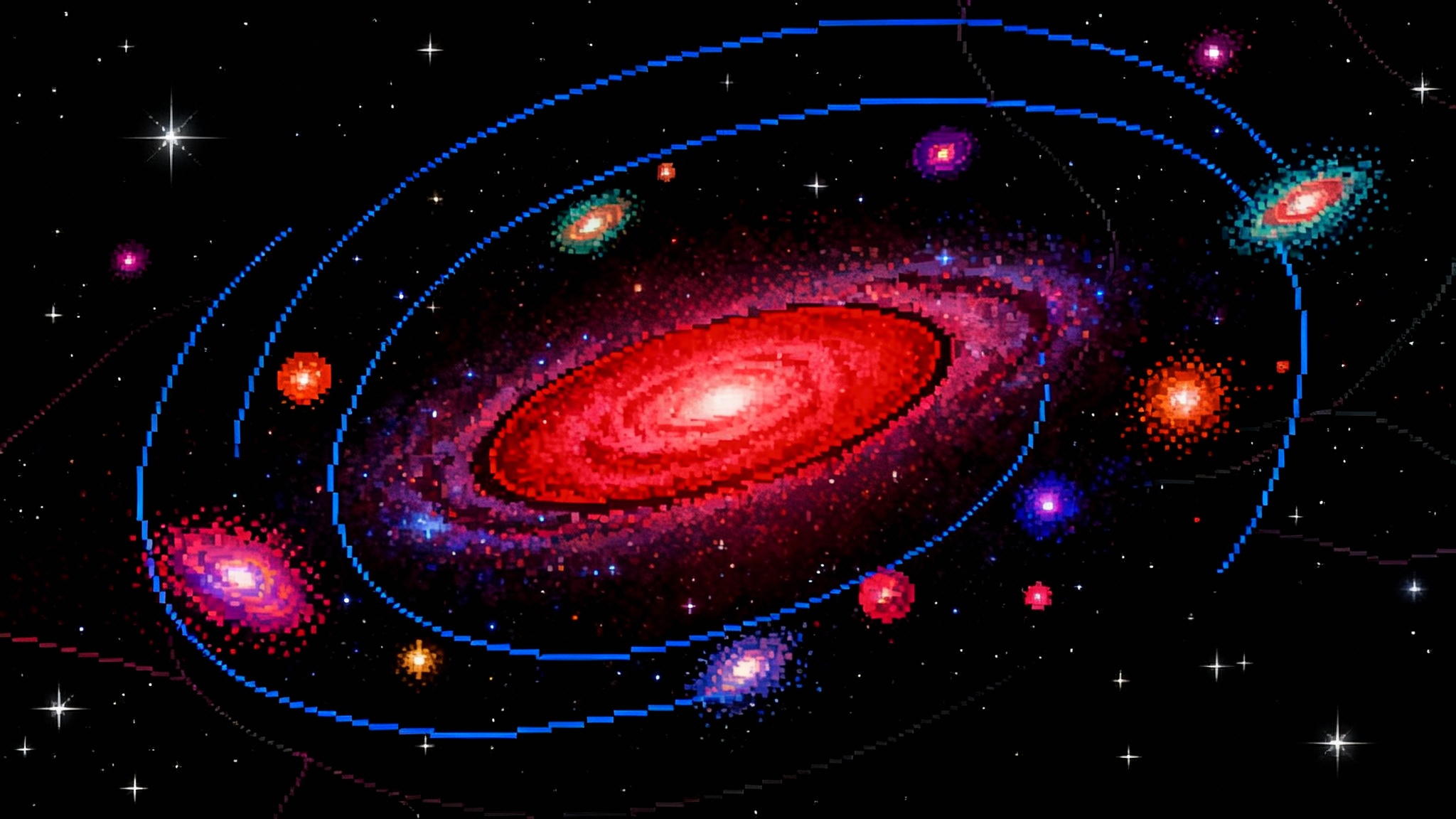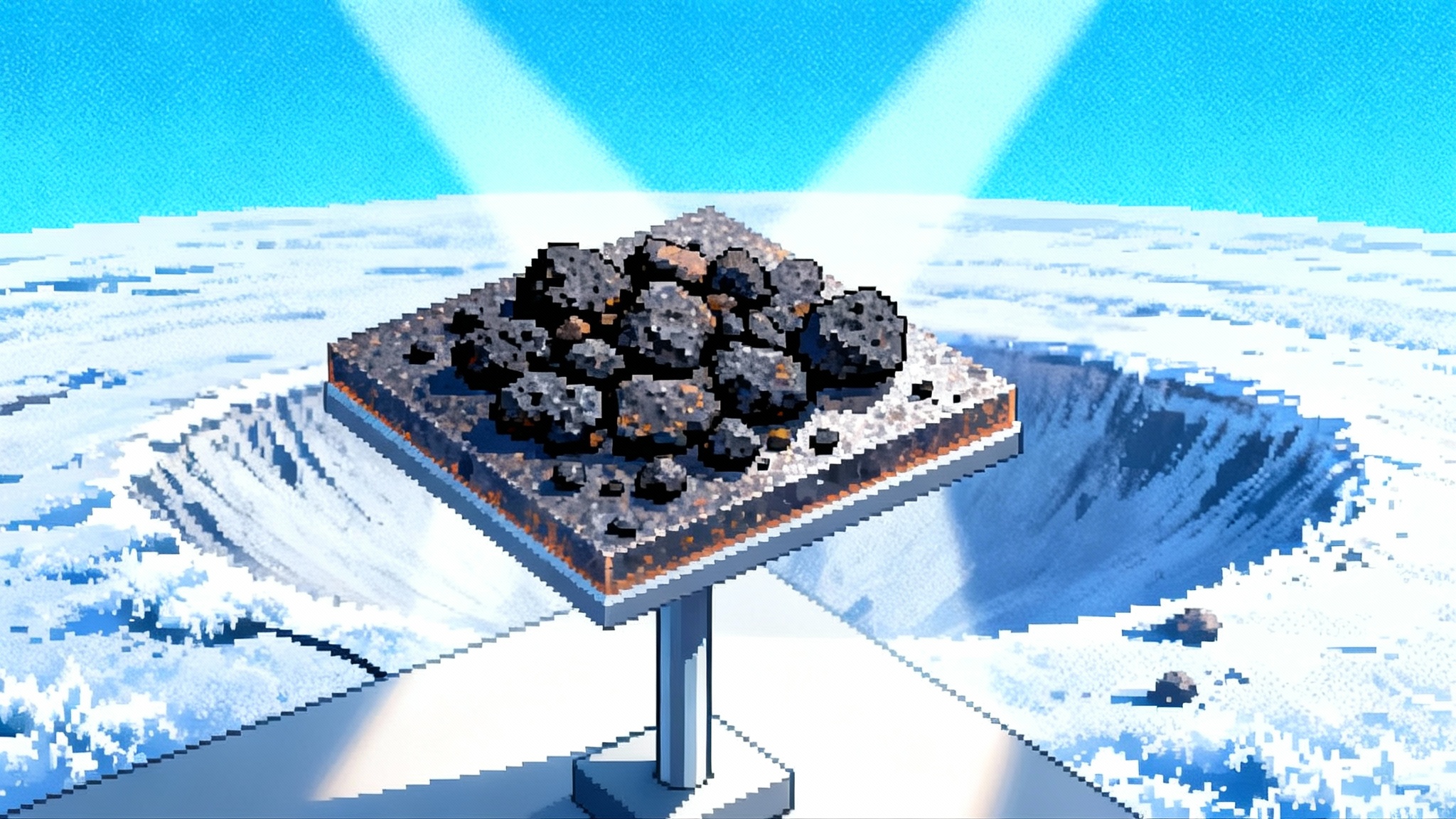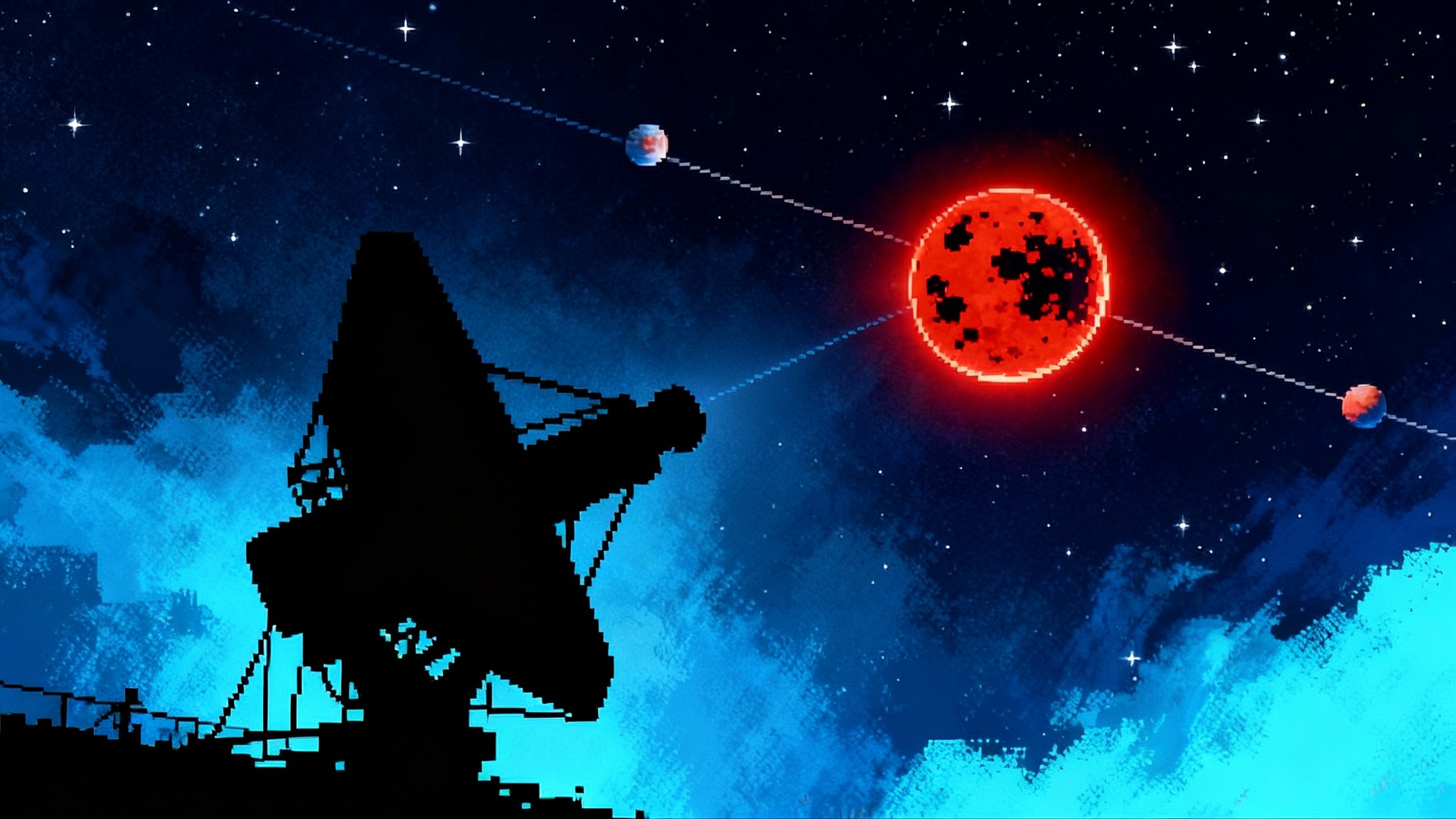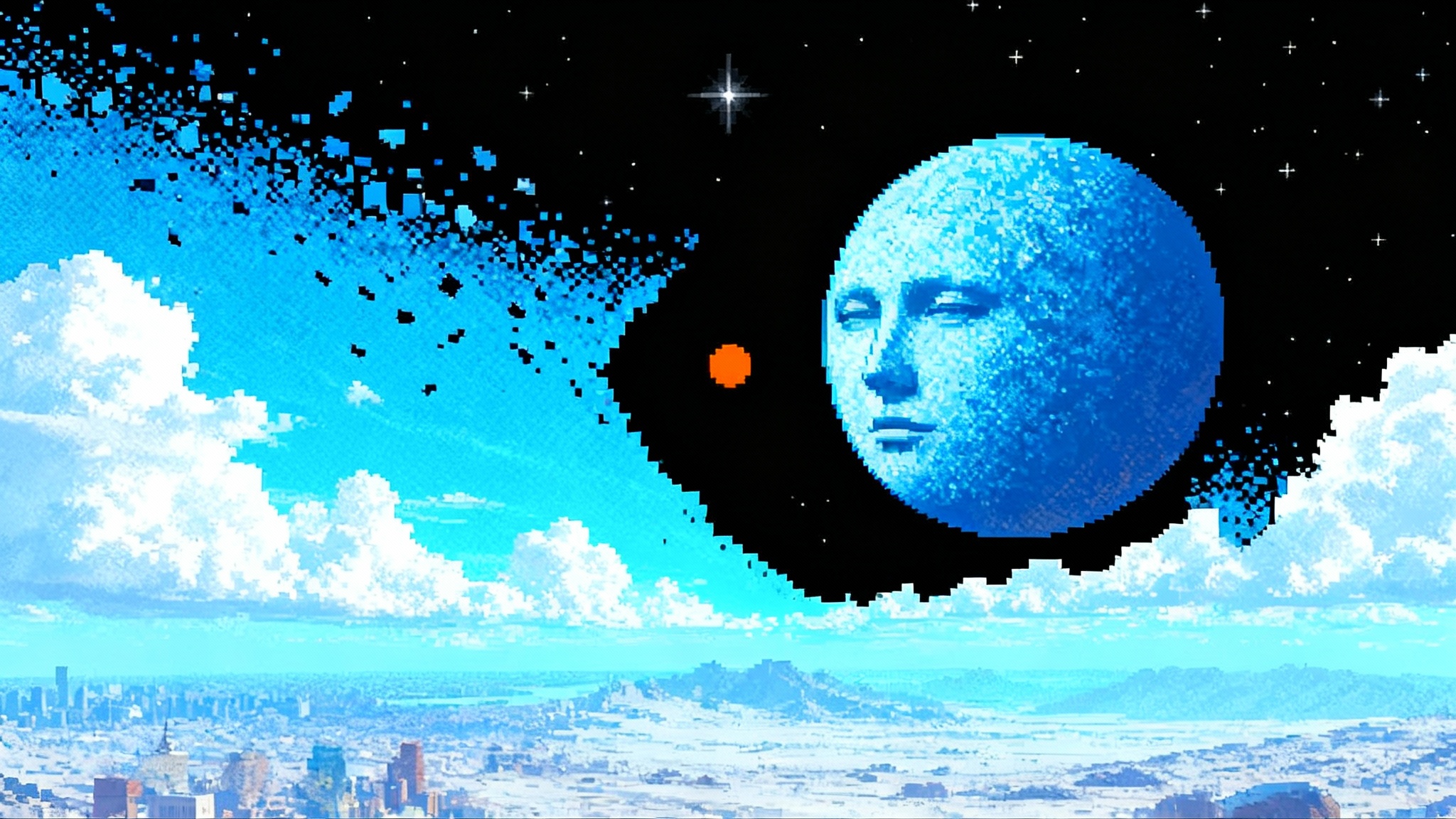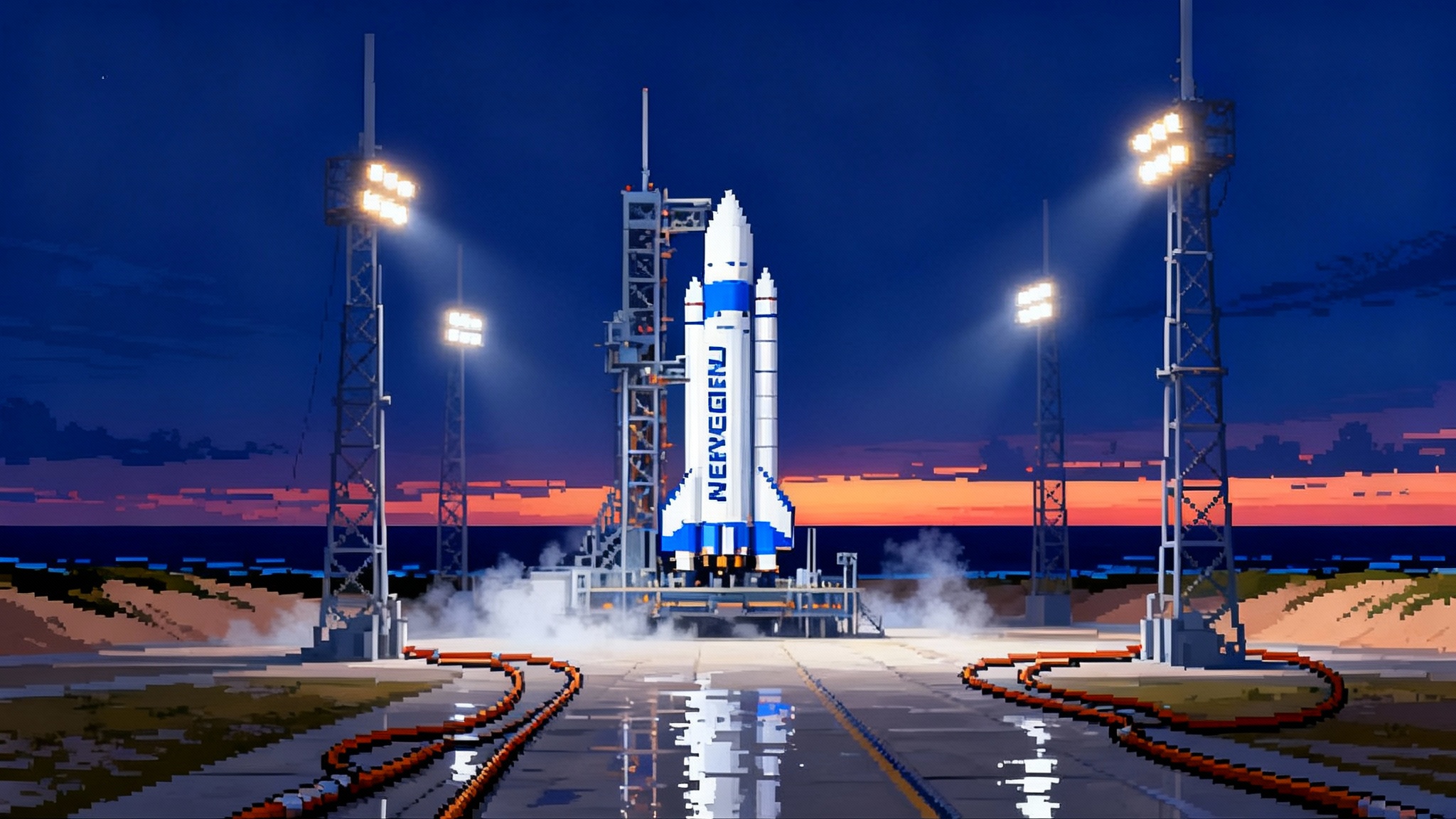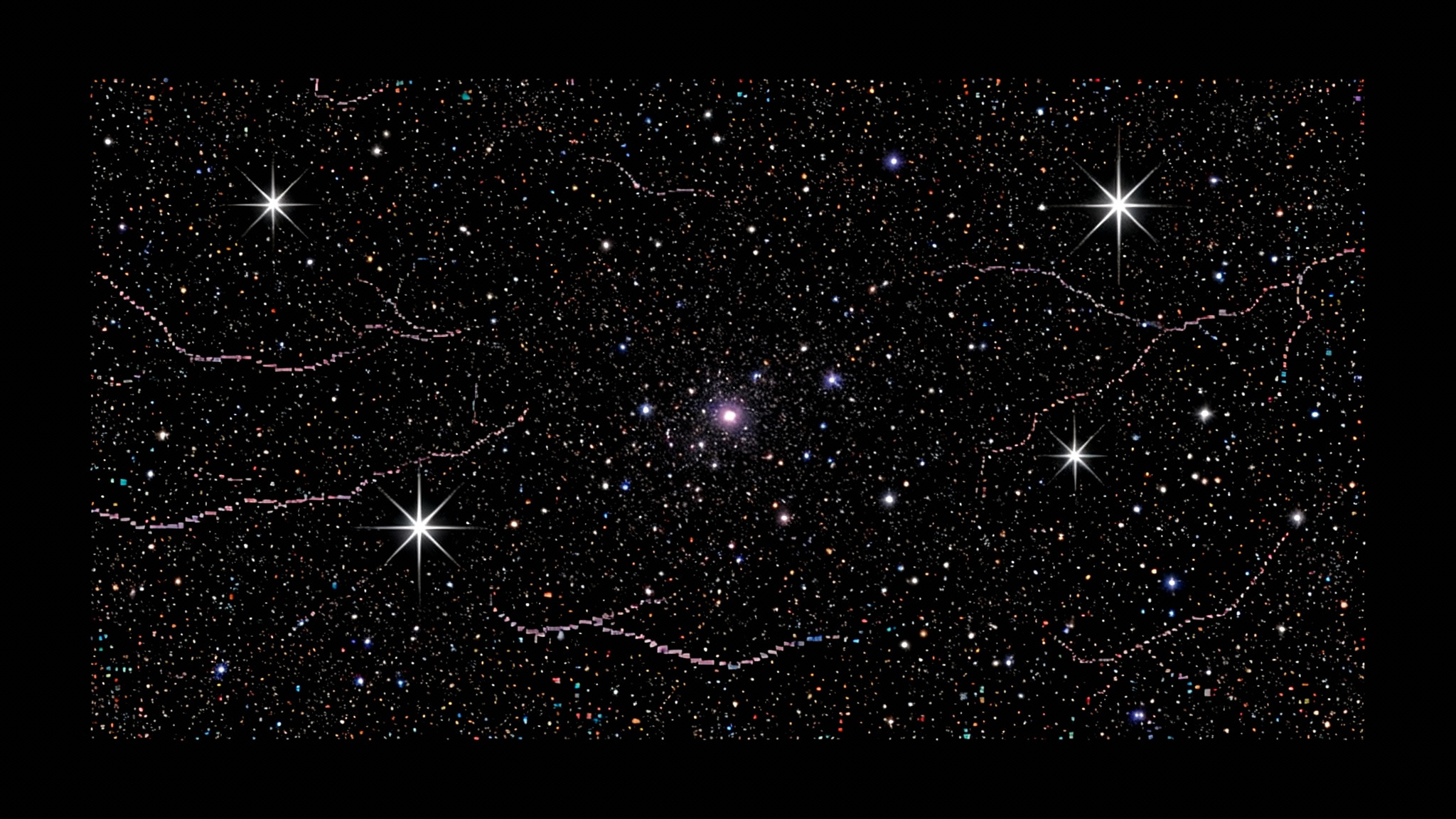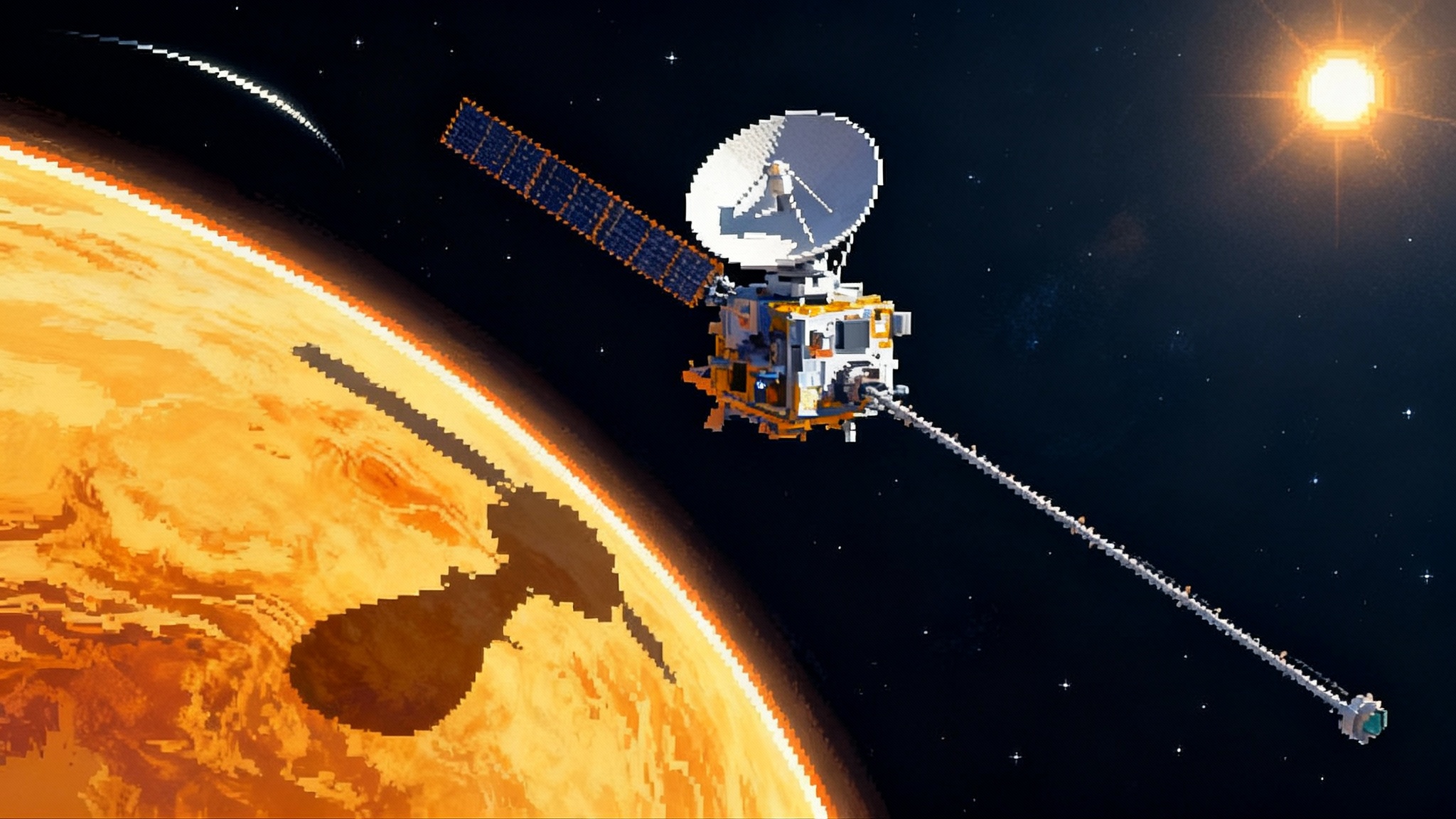JWST’s little red dots point to a fast track for black holes
Some of JWST’s puzzling little red dots may be compact black hole-star atmospheres rather than tiny galaxies. Paired with new detections of dust-shrouded early quasars, they outline a fast route to supermassive black holes and a clear set of tests to confirm it.
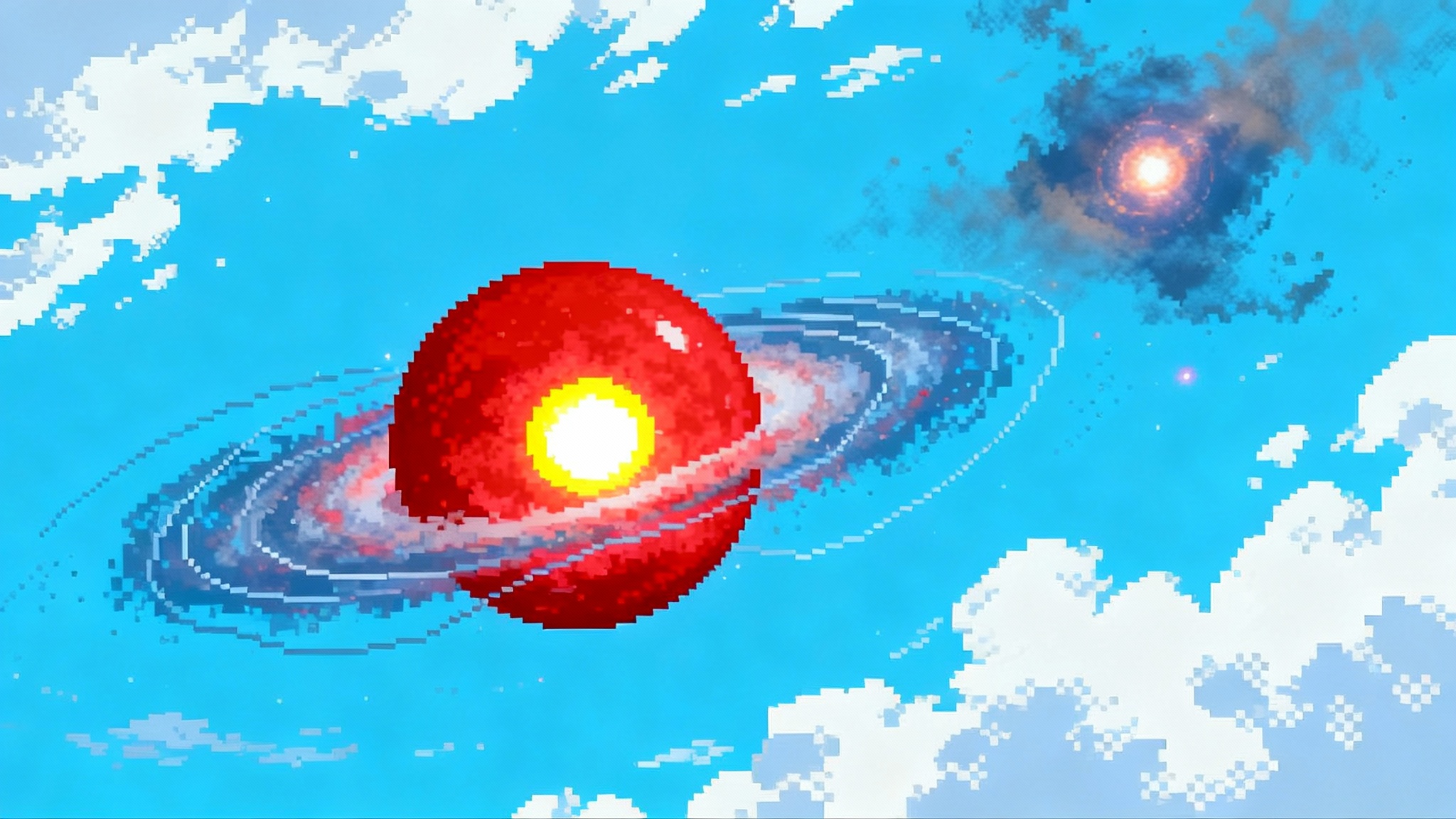
A mystery in scarlet
From its first JWST deep fields, the James Webb Space Telescope surfaced hundreds of compact, crimson pinpricks at high redshift that astronomers nicknamed little red dots. They are tiny on the sky, unusually bright in the rest optical, and most common in the universe’s first billion years. If all that light is from stars, many of these objects would be implausibly dense. But their spectra have been accumulating hints of actively feeding black holes instead of mature stellar populations. In the past year, a new interpretation has sharpened the picture. Some little red dots look less like miniature galaxies and more like something stranger and faster: black hole-star atmospheres.
That phrase sounds like science fiction. It refers to a black hole cocooned inside a dense, quasi-stellar envelope of gas. Radiation from the feeding black hole inflates and supports the envelope, giving the whole object a star-like atmosphere even though the power source is gravity. The idea has been around in theory under names like quasi-stars and black hole stars. What changed is that JWST’s spectroscopy is now revealing spectral breaks and absorption features that match dense hydrogen atmospheres, not old stars, in at least a few extreme cases. One standout is a compact source nicknamed The Cliff. Its outsized Balmer jump and absorption features can be reproduced by radiative transfer through very dense gas around a central black hole, consistent with a black hole-star atmosphere rather than a red, aged stellar population. That result reframes a portion of the little red dot population as compact black hole-envelope systems rather than overbuilt baby galaxies The Cliff’s dense gas interpretation.
Why a black hole-star atmosphere grows fast
A stellar atmosphere powered by nuclear fusion can only shine at rates set by stellar physics. By contrast, a black hole-star atmosphere is powered by accretion. When infalling gas is trapped by radiation inside a puffy envelope, the effective radiative leakage to space can be throttled. Energy is produced deep inside by the black hole’s accretion flow, but much of it is thermalized and reprocessed in the envelope. Outward luminosity is capped near the envelope’s own Eddington limit, while the black hole can still ingest mass at rates above the classical Eddington limit for the hole alone. In simple language, the envelope acts like a pressure cooker for growth. The object looks like a single red star to a distant telescope, but the hidden black hole can gain mass rapidly.
Several observational quirks of little red dots fall out of this picture.
- Red, compact continuum. An extended, cool atmosphere reprocesses the inner engine’s light to redder wavelengths, producing a compact source with a steeply rising rest optical continuum.
- Extreme Balmer jump and odd absorption. Dense neutral hydrogen can pile up large populations of electrons in the n=2 state, sharply imprinting a Balmer break and Balmer absorption bands that mimic old stars, even when few old stars are present. For background on the physics, see Balmer break physics.
- Broad permitted lines with weak high-ionization tracers. Gas near the black hole can produce broad H alpha or H beta, while He II and other hard-ionization lines may be weak if the ionizing spectrum is softened by the envelope. Some objects show just that behavior.
- X-ray faintness. At sufficiently high gas densities, X-ray photons get scattered and absorbed before escaping, so accreting black holes can look surprisingly quiet in X-rays while blazing in the infrared.
If even a fraction of little red dots are this class of object, the fast growth channel they provide could help bridge the gulf between plausible light seeds and the billion-solar-mass behemoths already in place by redshift 7 and beyond.
Dust-shrouded early quasars complete the picture
The black hole-star atmosphere idea addresses the very compact and red subset of objects. In parallel, JWST has now confirmed a population of dust-obscured luminous quasars at Cosmic Dawn. Starting with bright candidates from wide Subaru Hyper Suprime-Cam surveys and then capturing their rest optical spectra in the infrared, JWST NIRSpec detected broad emission lines in seven of eleven z > 6 targets. The analysis shows that their ultraviolet is almost completely blocked by dust and even a large fraction of visible light is absorbed, yet the underlying engines are classic fast-feeding supermassive black holes. The discovery effectively doubles the number density of bright quasars at early times compared with UV-selected counts and implies that a large share of the growth phase was hidden by dust JWST confirms dust-shrouded quasars.
Put side by side, these two strands suggest a coherent growth sequence. In the most gas-rich halos forming at early times, central black holes may often be born inside thick, star-like shrouds. Some remain envelope dominated, appearing as little red dots with telltale Balmer signatures that are not stellar. As gas flows increase and the nucleus clears lines of sight through local outflows or anisotropic structure, the systems light up as dust-obscured quasars, where JWST can now see their broad lines even though starlight is heavily reddened. Later still, as feedback hollows out the obscuration, the same engines emerge as the unobscured quasars we have been counting for decades. For context on survey implications, see obscured quasar counts at Cosmic Dawn. The discovery that dust-shrouded quasars are at least as common as unobscured ones at z > 6 fills a missing link between compact red seeds and familiar bright quasars.
A fast track to monster black holes
For more than twenty years, theorists have explored routes to rapid black hole growth. Two knobs dominate. You can start big with heavy seeds from direct collapse. Or you can feed small seeds at super-Eddington rates for long enough to hit a billion solar masses by the time the universe is 700 million years old. A black hole-star atmosphere accomplishes both goals at once. It forms preferentially in low angular momentum, gas-rich centers where inflow is funneled toward the nucleus. The envelope stabilizes the inflow by soaking up radiation pressure and redistributing heat, while its photosphere limits the escaping luminosity to values comparable to a supergiant star. Inside, the black hole can accrete rapidly, and because the object looks like a star rather than a blazing quasar, it attracts less disruptive feedback that would otherwise expel its fuel. In cosmological terms, this is how you sneak a big black hole through a narrow timeline.
That timeline is being revised in light of JWST. Little red dots are most common between a few hundred million and about one and a half billion years after the Big Bang, then decline as galaxies grow and inside-out assembly changes the gas supply near their centers. The new count of obscured quasars indicates that a hidden growth era was far more prevalent than UV surveys implied. Both trends push black hole growth to start earlier, proceed faster, and spend more time under wraps than our pre-JWST view allowed.
What would confirmation look like next
A bold new interpretation demands crisp observational tests. Fortunately, the key predictions of black hole-star atmospheres and the obscured-quasar phase are specific and within reach now.
- JWST NIRSpec spectroscopy across the Balmer jump. The decisive test is a spectrum that shows a very strong Balmer break and Balmer absorption consistent with dense gas at temperatures of several thousand kelvin, not the mixture of features expected from intermediate-age stars. The Cliff already fits that bill. Extending this analysis to a larger, unbiased sample of little red dots will reveal how common envelope-dominated objects are.
- H alpha and He II ratios. In an envelope dominated by dense hydrogen, recombination lines like H alpha can be strikingly strong while He II 4686 is weak. A statistical study of H alpha equivalent widths and He II limits in little red dots can separate dense-envelope models from standard unobscured AGN continua. JWST has both the sensitivity and the wavelength coverage to do this up to z about 8.
- MIRI constraints on hot dust. If a system is a true black hole-star atmosphere, its mid infrared signature may be cooler and less torus-like than a normal quasar because most heating occurs deep inside the envelope. JWST MIRI photometry and low resolution spectroscopy can map the turnover of the dust spectral energy distribution and search for silicate features that would indicate a classical torus.
- ALMA dust continuum and line maps. Millimeter observations can weigh and map the gas and dust feeding the nucleus. Continuum imaging will locate compact warm dust cores and measure column densities. Fine structure lines like [C II] 158 micron and [O III] 88 micron will trace dynamics, turbulence, and outflows. If black hole-star atmospheres are common, we should see very high central gas columns and compact, high optical depth dust emission, along with line profiles that imply deep potential wells on sub kiloparsec scales.
- Variability tests. A black hole-envelope system can show slow, color dependent variability as the inner engine flickers and the envelope responds. Time series from repeated JWST pointings or ground based infrared monitoring could catch these signals, distinguishing them from steady stellar populations.
- X-ray stacking. If envelopes trap high energy photons effectively, individual detections will be rare. Stacking X-ray data at the positions of spectroscopically confirmed little red dots should produce a deficit compared with standard AGN templates at the same bolometric power. That would point to photon trapping or Compton thick columns.
Equally important is a falsification path. If deep spectra of little red dots routinely reveal stellar absorption features and 4000 angstrom breaks that follow standard population synthesis with reasonable ages and masses, the envelope picture would retreat to a minority role. If ALMA finds low central columns and extended, optically thin dust that cannot hide a dense nucleus, that would weigh against the model. This is not a one way street, and that is a strength. The tests are crisp enough to quickly refine or reject the idea.
Why galaxy formation timelines shift
When the light from little red dots is reassigned from stars to black holes, several pressures on early galaxy theory are relieved.
- Lower stellar masses. If much of the luminosity is reprocessed accretion light, the stellar masses inferred from spectral energy distributions drop, reducing the need for implausibly dense early star clusters.
- Earlier black hole dominance. If many small high redshift systems are nucleus powered, then the coevolution of galaxies and their black holes starts earlier and is more nucleus led than previously thought. Feedback from the center can regulate star formation sooner.
- Hidden growth budgets. With dust-shrouded quasars now confirmed at z > 6 in significant numbers, the cosmic accretion budget gains a large obscured contribution. That helps reconcile the integrated mass density in black holes today with growth traced by bright quasars alone.
- Reionization balance. Obscured growth and envelope dominated phases emit fewer hard photons into the intergalactic medium than unobscured quasars would at the same accretion rates. That shifts more of the reionization burden back toward young stellar populations, while the central engines quietly build mass.
A timeline that includes a prolonged obscured phase also changes expectations for what surveys should find. Wide optical or UV searches will undercount growing black holes at early times. Infrared surveys with selection tuned to red, compact sources become critical waypoints. As Euclid and Roman map huge fields in the near infrared and feed targets to JWST, the census of compact red nuclei and obscured quasars should rise sharply. That stream of spectra will fix how much of the early growth passed in the dark.
What to watch in the next observing cycles
- Bigger, cleaner spectroscopic samples of little red dots, targeting both the most extreme and the more typical objects, with uniform NIRSpec setups across the Balmer jump and key lines from H beta to [O III].
- Follow up on the new z > 6 dust-obscured quasars with JWST and ALMA. Mid infrared spectra can constrain dust geometry and metallicity. ALMA can map [C II] and [O III] to connect nuclear feeding with galactic scale inflows and outflows.
- Direct hunts for the transition stage. If black hole-star atmospheres evolve into dust-obscured quasars, there should be hybrid systems with both envelope signatures and strong broad lines. JWST time will be well spent combing for those in existing deep fields.
- The physics of the envelope. Radiative hydrodynamic simulations tuned to the observed luminosities, line ratios, and variability should predict the lifetimes, mass gain per episode, and observable duty cycles of envelope dominated growth.
The emerging story
A year ago, little red dots were a problem. They looked too bright and too massive for comfort. Today, they look like a signpost. JWST is revealing a growth channel that hides the engine in plain sight. Black hole-star atmospheres explain how some compact red sources can shine like old galaxies without being old, and dust-shrouded quasars show that many early black holes spent their youth wrapped in blankets. The two together make a fast track to monsters in record cosmic time. The job now is to count how many took that track and to watch some in mid transit as JWST and ALMA turn up the lights.
